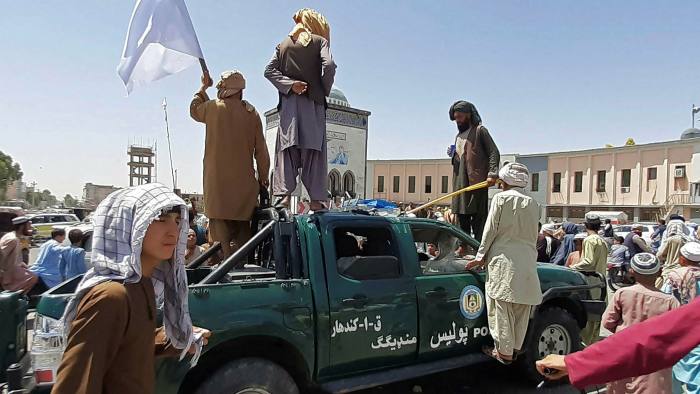Who are the Taliban that took over Afghanistan
The Taliban militants on Sunday retook Afghanistan’s capital, almost two decades after they were driven from Kabul by US troops.

The Taliban militants on Sunday retook Afghanistan’s capital, almost two decades after they were driven from Kabul by US troops. Recall that the Taliban were removed from power in Afghanistan by US-led forces in 2001, but the group has been on the offensive in recent months and is now on the brink of seizing power again.
More so, the world was shocked as Afghan security forces, though were well funded and well equipped, put up little resistance as Taliban militants seized much of the country following the withdrawal of US troops beginning in early July.
US officials while admitting that they miscalculated the speed at which the Taliban were able to advance across the country, after Afghan President Ashraf Ghani fled the country, abandoning the presidential palace to Taliban fighters said: “The fact of the matter is we’ve seen that that force has been unable to defend the country … and that has happened more quickly than we anticipated.”

Why didn’t the Afghan army put up a fight?
As the US troops began their final withdrawal in May, Washington and Kabul were confident the Afghan military would put up a strong fight against the Taliban.
With more than 300,000 personnel and multi-billion-dollar equipment more advanced than the Taliban arsenal, Afghan forces were formidable — on paper.
In reality, they were plagued by corruption, poor leadership, lack of training and plummeting morale for years. Desertions were common and US government inspectors had long warned that the force was unsustainable.
Afghan forces put up strong resistance this summer in some areas such as Lashkar Gah in the south, but they now faced the Taliban without regular US airstrikes and military support.

Who are the Taliban?
The Taliban was formed in 1994; it was made up of former Afghan resistance fighters, known collectively as mujahedeen, who fought the invading Soviet forces in the 1980s. Their biggest aim is to impose their interpretation of Islamic law on the country — and remove any foreign influence.
After the Taliban captured Kabul in 1996, the Sunni Islamist organization put in place strict rules. Women had to wear head-to-toe coverings, weren’t allowed to study or work and were forbidden from travelling alone. TV, music and non-Islamic holidays were also banned.
That changed after September 11, 2001, when 19 men hijacked four commercial planes in the US, crashing two into the World Trade Center towers, one into the Pentagon, and another, destined for Washington, into a field in Pennsylvania. More than 2,700 people were killed in the attacks.
The attack was orchestrated by al Qaeda leader Osama bin Laden, who operated from inside of Taliban-controlled Afghanistan. Less than a month after the attack, US and allied forces invaded Afghanistan, aiming to stop the Taliban from providing a safe haven to al Qaeda — and to stop al Qaeda from using Afghanistan as a base of operations for terrorist activities.
In the two decades since they were ousted from power, the Taliban have been waging an insurgency against the allied forces and the US-backed Afghan government.
But how were the Taliban able to do this so quickly?
The Taliban were reported to have started putting deals and surrender arrangements in place reportedly long before the launch of their blitz in May.
From individual soldiers and low-level government officials to apparently provincial governors and ministers, the insurgents pressed for deals — with the Taliban all but victorious, why put up a fight?
The strategy proved immensely effective.
The images from their final march to Kabul were not of bodies in the streets and bloody battlefields, but of Taliban and government officials sitting comfortably on couches as they formalised the handover of cities and provinces.
According to one reported the US estimate less than a month before the fall of Kabul, the Afghan government could collapse in 90 days.
Meanwhile, the victorious Taliban fighters patrolled the streets of Kabul on Monday as thousands of Afghans mobbed the city’s airport trying to flee the group’s feared hardline brand of rule.
